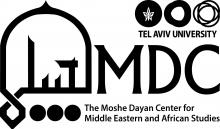Abstract
This study argues that the current political and cultural space in North Africa is more open and contested than at any time since the end of the colonial era, and that Berber ethnicity, in all of its varieties and permutations, has achieved a degree of significance that scholars of an earlier generation did not anticipate. It focuses on the way that Berber identity has shaped, and been shaped by the post-2011 events in North Africa, showing how the Berber-Amazigh identity movement has registered important achievements both vis-à-vis its own Berber-speaking communities and state authorities, while continuing to fall short of achieving a critical mass in mobilizational capacity. It also argues that ethnic differences and particularities have become more salient in a number of instances, to the consternation of state authorities and others who fear the unraveling of the status quo and the national fabric as they understand it.
The publisher has granted permission for the distribution of this chapter and may be downloaded by clicking on the "Download PDF" link above.

Berber at Tinerhir, illustrative. Photo Credit: Pieter Bas Elskamp, Flickr. Available via CC By-NC-ND 2.0.








